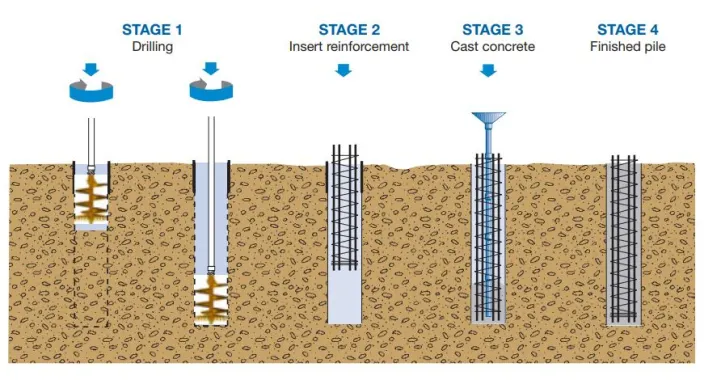In this article, we will discuss the types of highways across the country that every engineer should know. This guide will make you understand the types and what are aspects that you keep in mind while constructing the highways. Keep on reading!
Highways are the form of roads that connect two different states, cities, and districts. The roads ensure to connect industries, development, and other areas. Traffic lights, bridges, paths, pavement, and lane dividers make the highway safe. These roads have an excellent capacity to handle the traffic load and have planned construction. These kinds of road networks form the major routes of the countries.
Also Read: Types of Bridges- The Complete Structural Guide for Engineers

It builds a major network system and facilitates traffic. Depending on the requirements, the highway can be classified into different categories. This blog will discuss various types of highways that are laid across the country. Let’s get started.
However, before that, we would discuss various parameters that engineers should keep in mind while designing and constructing highways across the country. Keep on reading!
Parameters to Keep in Mind while Constructing Highway
The most crucial part of constructing and designing the highway is its planning. It helps design and understand what kind of roads can work in particular locations. This helps to increase the global reputation, exponential rate, and technical advancements that may seem challenging for the constructors and engineers. The planning is also helpful in calculating the capacity of the road to handle traffic and risk, including future safety goals.

This is to understand the construction area and highway requirements better. This also covers geometric designs, road buildings and highway project management, modern road designing techniques, and many more things.
Construction Materials for Types of Highways
The material selection is based on the type of road or highway you construct in a particular geographical location. Moreover, it also depends on the traffic volume the road will receive and climatic conditions that may damage the road. Some highways are constructed with bitumen material due to their excellent water repellent capacity, whereas some are only laid with concrete.
However, modern highway constructors and engineers emphasize eco-friendly materials and follow a sustainable methodology to construct the roads. The new trends help make highly durable and powerful roads that last longer and withstand all weather conditions.

What is the Purpose of Highway Engineering?
Highway engineering is a small sub-division of civil engineering. The civil engineers that fall into such category take care of designing, planning, operating, executing, and maintaining the highways, bridges, roads, and tunnels. It’s all about constructing the road networks and approving the best quality road projects.
A little mistake or drip in the highways and road constructions can invite accidents and threaten the life of the people. Therefore, highway engineers must ensure that everything is perfect, from designing to execution and safety norms.
They always use the best material for designing highways, pavements, and highway intersections. Highway engineers always focus on geometrical patterns to evaluate the thickness and intersection point of the pavements.
What do you Understand by Highway Designing Stages?
After the preliminary planning and finance phases, highway engineers are in charge of the most crucial step, known as design. These engineers make certain that the roadways they design meet all necessary safety, service, and quality requirements. Before planning roads & highways in a specific site, they must consider the complete topography of the area.
Now, you have an idea about the parameters you should keep in mind while designing the highways. What type of construction material you can use that we have discussed as well other than designing stages, it is time to understand the types of highways you can construct. Read the next section to know more about it.
5 Types of Highways Across the Country
Generally, there are five different types of highways constructed by highway engineers in any form of typography. These are as follows:
1. Flexible Pavement Design
This flexible pavement design uses three to four layers of asphalt concrete, including the bitumen layer. The shelf life of the road is nearly 20-30 years.

2. Rigid Pavement Design
Portland concrete is used for designing such roads. These roads withstand for 40 years and even more.

3. Flexible Pavement Overlay Design
These kinds of pavements are laid with three layers: Portland cement, asphalt concrete, and an ultra-thin layer of Portland cement.
Also Read: A Guide on Types of Cement and Its Uses

4. Rigid Pavement Overlay Design
This form of road design is usually constructed to renovate old rigid pavement and wears out the damage because it reaches the last stage of its life.

5. Drainage System Design
This covers the key concepts of designing and constructing the proper drainage system for the roads and highways. The highways are generally made with top-quality water repellent material, but they still need an adequate drainage system to avoid damage.

Highway Safety Guidelines to Follow
Highway safety is a critical component of highway design and construction. Designing a highway entails taking safety precautions to ensure that automobile traffic and pedestrians and bicyclists are safe while on the road.
Bott’s dots, traffic signals, pedestrian markings, zebra crossings, and traffic circles are key highway design features. One contemporary era innovation that makes our road travel safe and efficient is GPS-based road traffic monitoring systems. When planning a roadway, bike traffic is taken into account as well.
1. Traffic Signals
The regulations governing the maritime right of way recognized port as red and starboard as green, indicating that the warship on the left had to come to a halt to enable the vessel on the right to cross.
They chose red to depict a stop sign since it indicates danger or warning, and it also drew the attention of passers-by. Green, which means ‘caution,’ and white, which means ‘move,’ were the other two hues utilized by railway engineers.
Filters were utilized in traffic signals, and as a result, the white hue was connected with various issues. Because they likewise appeared as white from a distance, skyscrapers, stars, and the sparkle of sunlight or other lights may be misinterpreted as a ‘go’ signal.

2. Bott’s Dots
Botts’ Dots are divided into two categories. These can be either reflective or non-reflective. The basic ones are white or amber and have a dome shape made of ceramic or plastic material. The reflective ones are square and composed of polyester that can withstand strong impact. Parallel lanes are indicated by white dots, whereas center markers are amber. The red dots indicate that the driver is in the incorrect lane and must exit immediately.

3. GPS-Based Traffic Management System
Because the costs of GPS devices are cheap and on the decline, GPS-based road traffic monitoring might help reduce total maintenance expenses. Everyone who owns a vehicle has a GPS gadget or can purchase one, which indicates that the scene has already been set. All that remains is to connect the various components to create the ideal GPS-based highway traffic monitoring system.

These are the types of highways that you should know about. These designs are mostly followed when someone is assigned to construct a highway.
Wrapping Up: Types of Highways
So, we hope the information covered here helps you in gaining knowledge about the different types of highways that are laid across the countries.
The basic information about the highways helps in dealing with the road construction projects easily, and you will be able to understand which kind of roads needs to be constructed in the given area. Not only that, we have tried to cover the safety guidelines that you should prepare while designing a highway.
With this, we came to an end discussing types of highways and their designs, parameters, and guidelines that you need to keep in mind. We will soon be coming up with other posts that will help you in your civil journey. Keep reading.
What are the major types of highways?
Major types of highway roads that are mostly found in every part of the country are national highways, state highways, major district highways, and other major district roads.
What types of roads are preferred for constructing highways?
Bituminous roads are mostly preferred for highways as they are cheaper than other surface roads. Engineers mostly construct bituminous roads until there are any specific requirements for highways.
What are the problems faced in constructing highways?
There are many problems with highways in India. Major ones are there are numerous crossings, no sideways, and not built for heavy traffics. Not only that, proper safety measures are not taken care of while constructing highways in India. Too many tolls make it expensive for people to travel on highways and city roads are very narrow.





